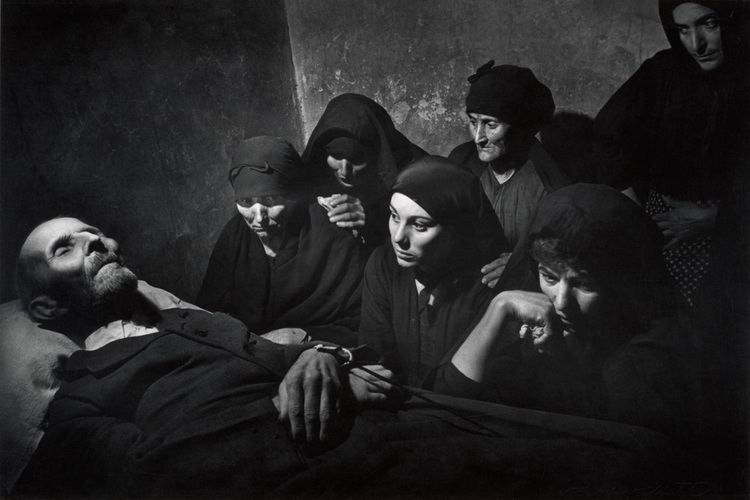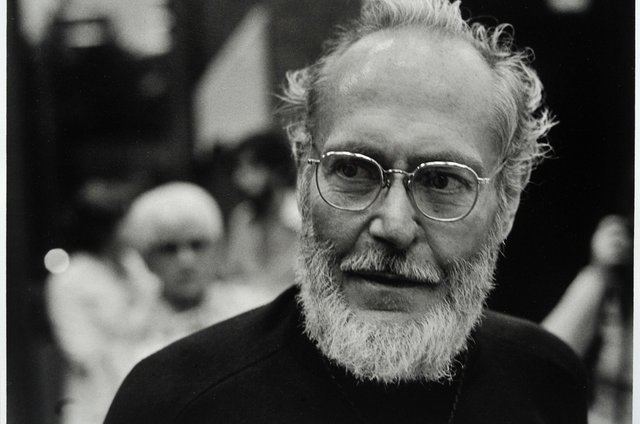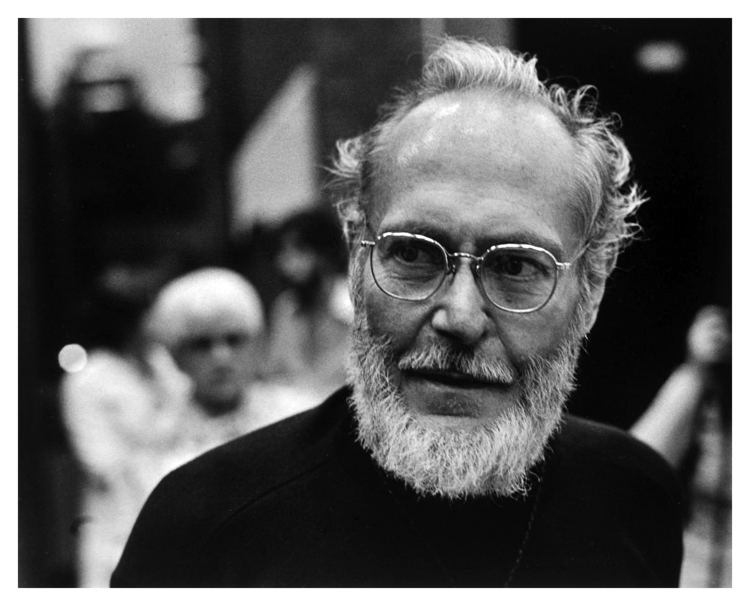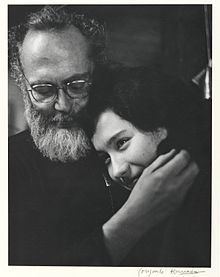Occupation Photographer Name W. Smith | Role Photographer | |
 | ||
Awards Guggenheim Fellowship for Creative Arts, US & Canada Children Marissa Smith, Juanita Smith Similar People Henri Cartier‑Bresson, Josef Koudelka, David Hockney, Gilles Mora | ||
A slice of life a historical view of w eugene smith
William Eugene Smith (December 30, 1918 – October 15, 1978) was an American photojournalist, renowned for the dedication he devoted to his projects and his uncompromising professional and ethical standards. Smith developed the photo essay into a sophisticated visual form. His most famous studies included brutally vivid World War II photographs, the clinic of Dr Schweitzer in French Equatorial Africa, the city of Pittsburgh, the dedication of an American country doctor and a nurse midwife, and the pollution which damaged the health of the residents of Minamata in Japan.
Contents
- A slice of life a historical view of w eugene smith
- BOOKSHELF W EUGENE SMITH
- Life and early work
- War work
- 1950s
- Jazz Loft Project
- Japan and Minamata
- Move to Arizona and death
- Legacy
- The Big Book
- Notable photographs
- Publications
- References

BOOKSHELF :: W EUGENE SMITH
Life and early work

William Smith was born in Wichita, Kansas in December 1918. Smith graduated from Wichita North High School in 1936. He began his career by taking pictures for two local newspapers, The Wichita Eagle (morning circulation) and the Beacon (evening circulation). Smith eventually moved to New York City and began working for Newsweek. He became known there for his incessant perfectionism and thorny personality. Smith was fired from Newsweek for refusing to use medium format cameras, and joined Life magazine in 1939 using a 35mm camera.
War work

As a correspondent for Ziff-Davis Publishing, and then again Life magazine, Smith was often on the front lines in the Pacific theater of World War II. He was with the American forces during their island-hopping offensive against Japan, photographing U.S. Marines and Japanese prisoners of war at Saipan, Guam, Iwo Jima, and Okinawa. In 1945, while he was photographing battle conditions on Okinawa, Smith was hit by mortar fire. After recovering, he continued at Life, until 1954.
1950s

Smith continued to work at perfecting the technique of the photo-essay with a humanist perspective. In 1950, he was sent to the United Kingdom to cover the General Election, in which the Labour Party, under Clement Attlee, was narrowly elected. Life magazine had taken an editorial stance against the Labour government. In the end, a limited number of Smith's photographs of British working-class people were published, including three shots of the South Wales Valleys. In a documentary made by BBC Wales, Professor Dai Smith traced a miner who described how he and two colleagues had met Smith on their way home from work at the pit and had been instructed on how to pose for one of the photos published in Life.
Smith severed his ties with Life because of the way the magazine had used his photographs of Albert Schweitzer (one of which was later revealed to have been heavily manipulated). Upon leaving the magazine, Smith joined the Magnum photo agency in 1955. There he started his project to document the city of Pittsburgh. The project was supposed to take him three weeks, but ended up taking him a year and encompassed tens of thousands of photographic negatives. It was too large to ever be shown, although a series of book-length photo essays were eventually produced.
Jazz Loft Project
From 1957 to 1965 Smith took photographs and made recordings of jazz musicians playing at a Manhattan loft shared by David X. Young, Dick Cary, and Hall Overton. The Jazz Loft Project, devoted to preserving and cataloging the works of Smith, is directed by Sam Stephenson at the Center for Documentary Studies in cooperation with Center for Creative Photography (CCP) and the Smith estate. From 1957 to 1965, Smith made approximately 4,000 hours of recordings on 1,740 reel-to-reel tapes and nearly 40,000 photographs in a loft building in Manhattan's wholesale flower district where major jazz musicians of the day gathered and played their music. The tapes have not been played since they were archived at the CCP (part of the University of Arizona), following Smith's death in 1978.
The project is preserving and cataloging Smith's tapes, researching the photographs, and obtaining oral history interviews with all surviving loft participants. The transferred recordings reveal high sound quality and musical and cultural content, offering unusual documentation of an after-hours New York jazz scene. Smith's work includes tapes of: Thelonious Monk, Zoot Sims, Roland Kirk, Bill Evans, Chick Corea, Roy Haynes, and Lee Konitz. Underground legends such as drummer Ronnie Free, bassist Henry Grimes, drummer Edgar Bateman, multi-instrumentalist Eddie Listengart, and saxophonist Lin Halliday, as well as many unknowns are also included in the archives. Research on the preserved tapes so far indicates that at least 300 different musicians are represented. Monk was recorded in private collaborations with Hall Overton, a loft resident, and full band rehearsals for now-famous concerts at Town Hall, Lincoln Center, and Carnegie Hall in 1959, 1963, and 1964. As of summer 2010, nearly four hundred people have been interviewed as part of the project. The tapes also contain many Smith obsessions and oddities, such as recorded street noise in the flower district, late-night radio talk shows, telephone calls, television and radio news programs, and many random loft dialogues among musicians, artists, and other Smith friends and associates.
Japan and Minamata
In January 1972, Smith was attacked by Chisso Company employees near Tokyo, in an attempt to stop him from further publicizing the effects of Minamata disease to the world. Smith survived the attack, but with limited vision in one eye. During the time Smith was not able to work due to his injuries, his wife of Japanese origin, Aileen M. Smith, continued his work. Smith and his wife lived in the city of Minamata from 1971 to 1973, and created a photo essay detailing the effects of the poison-induced disease, caused by a Chisso factory discharging heavy metals into water sources around Minamata. The essay was published in 1975 as "'Minamata', Words and Photographs by W.E. Smith and A.M. Smith." One of his most famous works, Tomoko Uemura in Her Bath, taken in December 1971, and published a few months after the 1972 attack, drew worldwide attention to the effects of Minamata disease.
Move to Arizona and death
Smith returned from his stay in Minamata, Japan, in November 1974, and, after completing the Minamata book, he moved to a studio in New York with a new partner, Sherry Suris. Smith's friends were alarmed by his deteriorating health and arranged for Smith to join the teaching faculty of the Art Department and Department of Journalism at the University of Arizona. Smith and Suris moved to Tucson, Arizona in November 1977. On 23 December 1977, Smith suffered a massive stroke, but made a partial recovery and continued to teach and organize his archive. Smith suffered a second stroke and died on October 15, 1978. He was cremated and his ashes interred in Crum Elbow Rural Cemetery, Hyde Park, New York.
Legacy
Summarizing Smith's achievements, Ben Maddow wrote that Smith claimed that his vocation was "to do nothing less than record, by word and photograph, the human condition. No one could really succeed at such a job: yet Smith almost did. During his relatively brief and often painful life, he created at least fifty images so powerful that they have changed the perception of our history.
Smith was arguably the originator and certainly the master of the photo-essay. In addition to Pittsburgh, these works include Nurse Midwife, Minamata, Spanish Village, Country Doctor, and Albert Schweitzer–A Man of Mercy.
Today, Smith's legacy lives on through the W. Eugene Smith Memorial Fund to promote "humanistic photography". Since 1980, the fund has awarded photographers for exceptional accomplishments in the field.
The Big Book
The Big Book is a conceptual photobook that Smith created at the beginning of the 1960s, intending to serve as retrospective sum of his work as well as a reflection of his life philosophies. Considered "unviable and non-commercial" at the time, due to having 380 pages and 450 images, it was not published at the time, but as part of his legacy, was finally published as a facsimile reproduction in 2013 by the University of Texas Press. A vast magnum opus, the work includes two of Smith's original volumes, which present his imagery not according to story (as they would have been published at the time of their creation) but rather according to Smith's own creative process. The modern publication comes with a third book included in the slip-case, offering contemporary essays and notes.
